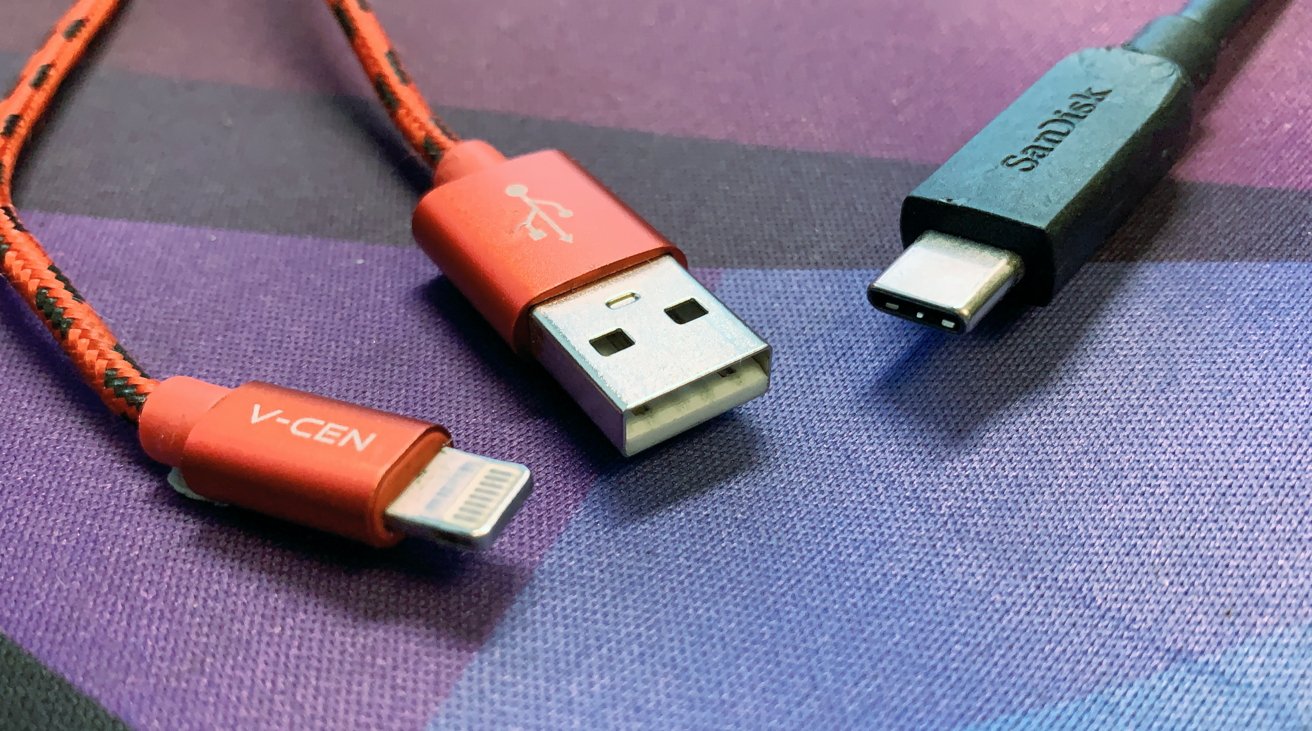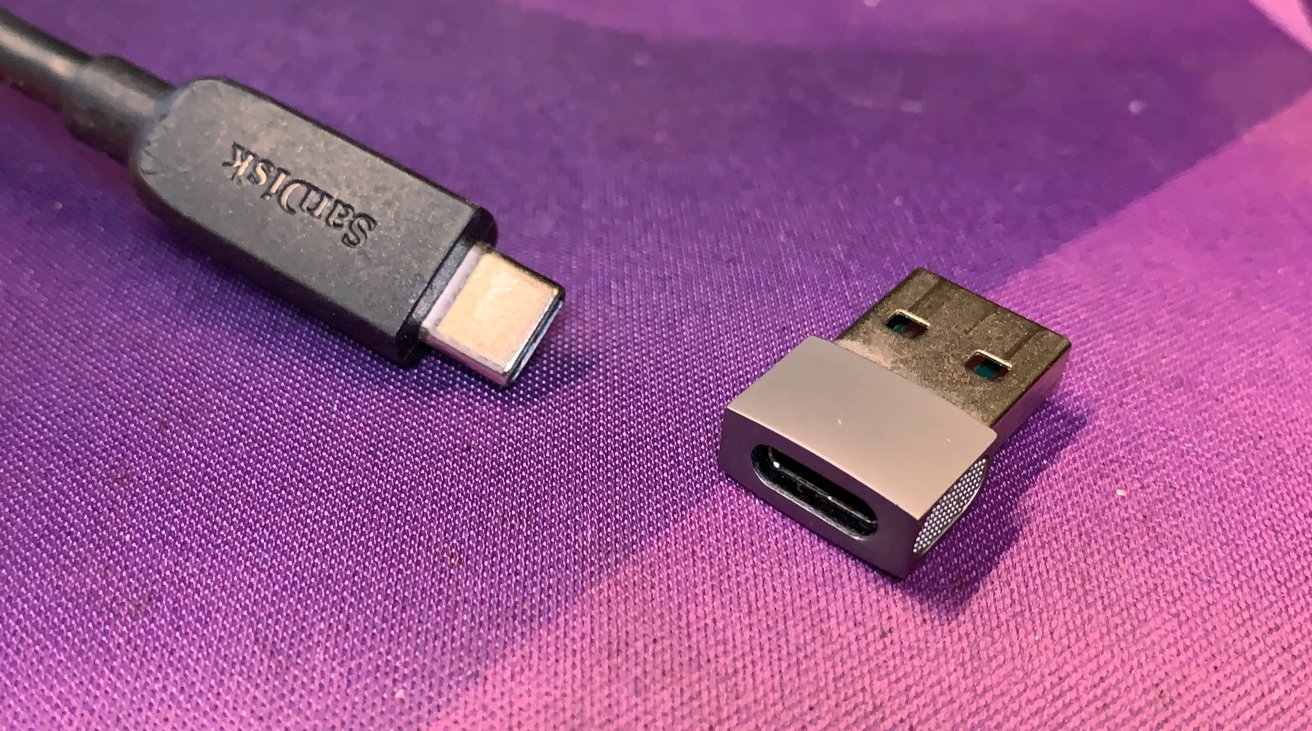Apple's replacement of the charging port on the iPhone 15 with USB-C will require some user charging changes, but your old AC adapters, batteries, and cables aren't trash. Here's what you need to know.
Charging devices is a habit that many people will be used to, since they will tend to need to recharge everything they use at least once a day. It's a habit that occasionally requires some modifications as new hardware is introduced, and a step that many people will find themselves taking this fall.
During Apple's September 12 event, the company will introduce its iPhone 15 generation of devices. One of the major changes is the introduction of a USB-C port in the base, replacing the now-gone Lightning connector.
This may not seem like a big issue for the tech enthusiast, but to most, this could cause problems for their connectivity setup. While many Lightning accessories may find themselves unable to directly connect to the new iPhones, there are also the cables people use to recharge their devices that may need adjustment or changing.
Owners of iPad Pro and iPad models will already have dealt with this situation, as Apple has already changed their connectors from Lightning to USB-C. Now, it's the turn of iPhone users.
What follows are a few things you should consider about your cables, and how to establish connections between USB-A, USB-C, and Lightning devices.
Why is Apple changing the iPhone to USB-C?
Apple isn't going to give a definitive explanation for the shift to USB-C, but it is likely that it will do so by promoting the benefits of the connection over Lightning to consumers.
For a start, USB 3 and its use of USB Type-C connectors can support far higher power levels than Lightning. While the latter can manage 12W 2.4A power transfers, you can see 100W 5A power over USB-C in some cases.
The ability to cram more power through the cable is one attractive feature, but another is data transfers. Lightning is comparable to USB 2.0, so it's stuck with a maximum transfer speed of 480Mbps.
By comparison, USB-C connectors can handle far higher levels, such as 5Gbps, 10Gbps, or a USB Type-C Thunderbolt connection could allow up to 40Gbps.
For consumers, there's also the convenience factor, since you could feasibly charge many devices with USB-C, but only Apple devices with Lightning.
This last point is also a big part of legislative moves in various parts of the world to mandate a common charger. For example, the European Union introduced a law affecting countries within the EU in October 22, effectively forcing smartphone and tablet producers to use USB-C by the end of 2024.
iPhone 15 USB-C — Port to Port
While there are many devices out there that rely on older connection types, such as mini-USB or micro USB, we are dealing with just three port types for this article:
- USB-A, the rectangular connection that have been used by computers for over two decades.
- USB-C, an oval-shaped and reversible connector that is replacing USB-A in many situations. USB Type-C, the connector itself, is also used for Thunderbolt connections.
- Lightning, Apples' 8-pin connector resembling a flat plate.
While the connectors are differently shaped, it's still possible to use connections of each type to connect to items of another, for transfers of power and for handling data communications.
However, you cannot really connect every port type to each other, as in many cases, it won't work.
From the left: Lightning, USB Type-A or USB-A, USB Type-C or USB-C
In the case of Lightning, power is usually consumed by the device using that particular port, rather than the connector being used to draw power to recharge something else. A Lightning port takes power, but doesn't transmit it.
Likewise, the USB-A port is typically used at the power-transmission or the host computer end of a cable. You don't recharge hardware by providing power to a USB-A port.
USB-C is the exception here, as it can be used on both ends of the cable equation: from the power source to the device. Therefore, your cable needs to have a USB-C or USB-A on one end, and either USB-C or Lightning on the other.
You cannot easily find usable USB-A to USB-A cables, nor can you find Lightning to Lightning. Let alone actually be able to use them with your hardware outside some extremely unusual use cases.
iPhone 15 USB-C Basic cables
The most obvious answer to the problem is to simply use a cable that matches whatever power source you're using (USB-A or USB-C on one end) and to have the right port on the other end for the device you're recharging (USB-C or Lightning).
In effect, you're looking for one of four types of cables:
- USB-A to USB-C
- USB-A to Lightning
- USB-C to USB-C
- USB-C to Lightning.
If you are recharging your hardware in just one specific situation, such as connecting your iPhone up to an Apple-produced charging plug while you sleep, then there's no harm in just using a dedicated cable.
Depending on the manufacturers of devices you own, you may already own the right cable for the job as it could've been supplied with your hardware. In cases where a cable wasn't supplied by the manufacturer, the cable's been lost, you need a spare, or if a supplied cable won't connect to your power source, you're going to need to buy a new one.
Be aware that not all charging cables will operate at the highest speeds for the connection. Sometimes manufacturers sell a cable as charging-specific, which may infer reduced data throughput, or even no data transfers at all, but you will usually get the cable at a cheaper price.
iPhone 15 USB-C — converters
Let's say that you have cables that would work, but only one of the two connections is right for the task. You could buy a new cable, but you could also acquire a converter.
All a converter does is change a cable's port from one type to another, and it simply slips onto the end of the cable. In many cases, the converter will allow power to flow, as well as data, through the connection.
This is also a good route if you want to carry multiple devices, but you don't want to have to cart around a charging cable for each one. As a converter isn't much bigger than the connector you'd find on a cable anyway, they could be easier to store and move around than a multitude of cables.
For example, if you have a collection of devices that charge using USB-C, but you know that you have a mix of charging points that are either USB-C or USB-A, you could go for a USB-C to USB-C cable accompanied by a USB-C to USB-A converter.
An example of a USB-C to USB-A converter.
If you have a device with a captive cable of one type, say USB-A, you could also use a converter to make it work with a different connection type, like USB-C.
However, the use of a converter may not necessarily give you the fully seamless experience of a made-for-purpose cable. Since there's an extra connective change at one of the cable's ends, that could result in a marginal change in power draw, or reduce the throughput of data between devices.
Depending on the converter, it may not even support data and just handle power. If all you're using it for is to recharge devices, this isn't really too much of a problem.
You can find converters that change the connection from one of the three discussed earlier to one of the others, and you can even find bundles containing multiple converters too.
If you want an all-in-one solution, some cables have adapters attached to each end, so they're ready whenever you need them. For example, a USB-C to USB-C cable could also have an adapter for Lightning and USB-A on each side.







